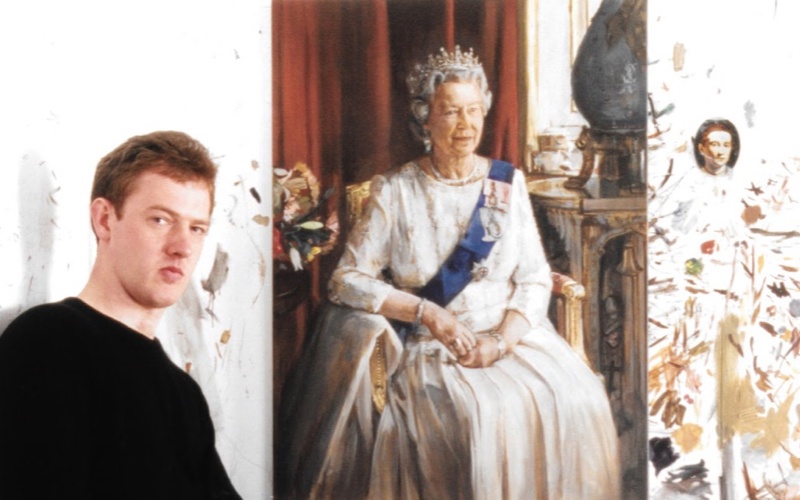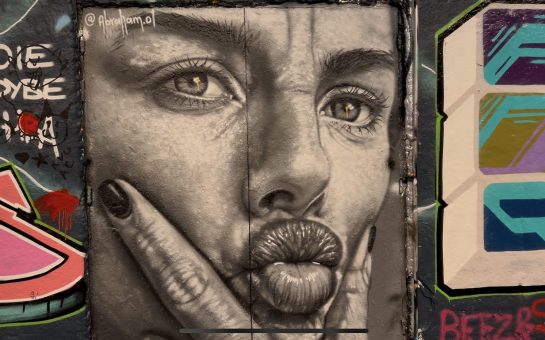Christian Furr, the youngest artist to have painted the Queen’s portrait, reveals that underneath all the formality, the Queen was full of liveliness, ‘delicious’ humour, and quick wit.
Christian, 55, was commissioned to paint Queen Elizabeth II’s portrait in 1995 when he was 28.
He was living with his girlfriend, now wife, Emma in a shop above a restaurant in Surbiton.
Robert Newell, the Director General of the Royal Over Seas League called him and asked: “Are you sitting down?” before telling them that the Queen wanted him to paint her portrait.
In a surreal daze, Christian was then driving to Buckingham Palace in his red VW, where the guards laughed at him at the gate, and he was left to find the yellow drawing room.
The Queen had seen his portrait of Maneck Dalal, the former chairman of the Royal Over Seas League, and Christian speculated that perhaps it was something about the tranquillity of the image that enticed her, as it portrayed a balance of formality and tradition with personality.
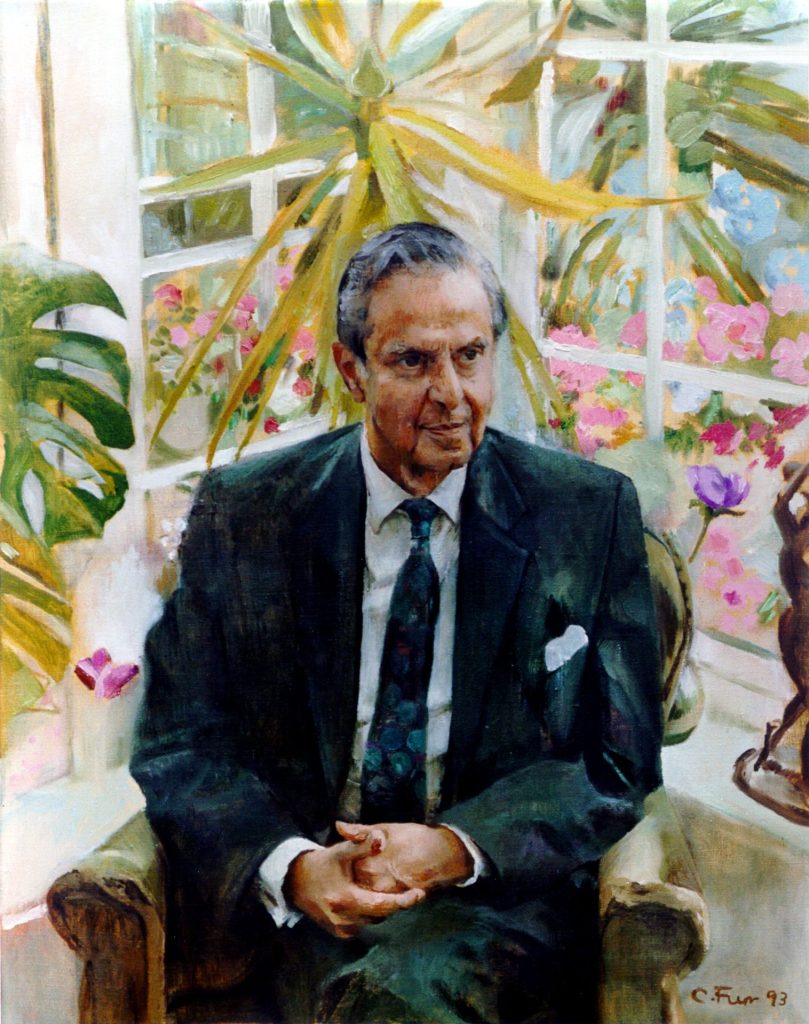
This balance was the focus of Christian’s approach to the Queen’s portrait. After meeting her, Christian realised that: “She craved ordinariness. I don’t think she liked fuss, but even though she craved ordinary things, she was majestic.”
Rather than positioning the Queen further away, which all the previous portraits of her had been done, Christian said: “I decided to go closer to try to capture the personality I couldn’t see in the other paintings.”
In his first meeting with the Queen, the Queen asked if she could keep her shawl over the chair.
After that, Christian made sure it was included in the image as it exposed something about the Queen’s personality that others had not noticed.
He explained: “When I do portraits I’m always trying to reveal something about somebody: an aspect of their personality that might not have been picked up on.
“Behind all the formality and tradition, you can focus on the person. I think that is what having your portrait should be like, to have time out, and time to focus on the moment and not rush past life.”
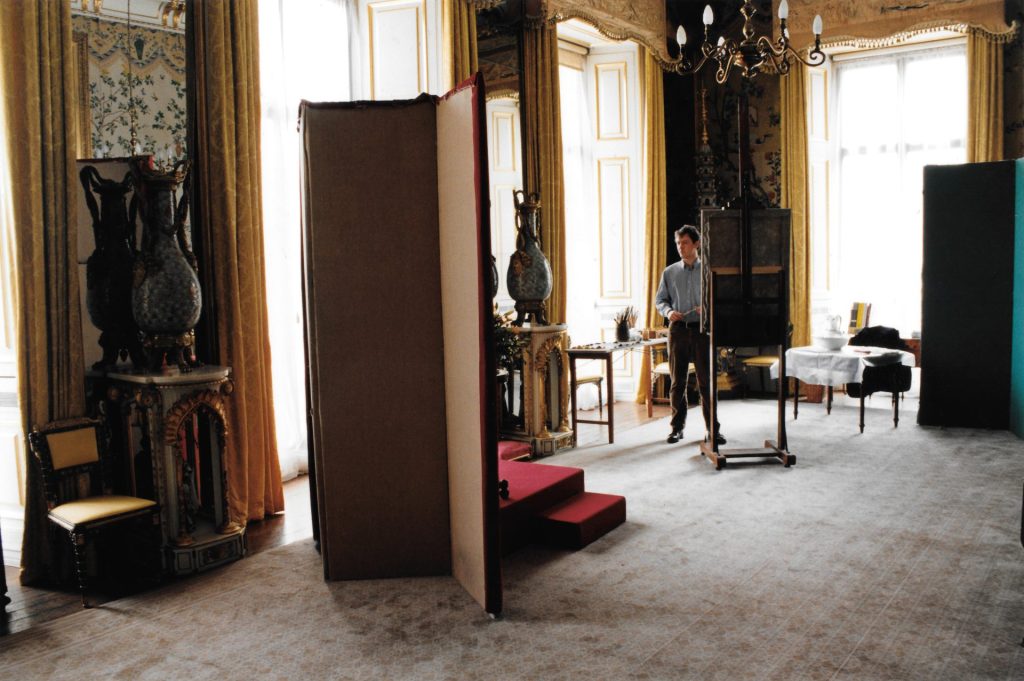
He was also given carte blanche with what the Queen should wear for the portrait. After meeting with the Queen’s dresser to go through options, he decided that the outfit should be based on the star and the Order of the Garter: the colours red, white and blue.
He felt this represented the country: “I had to capture the Queen’s life in one image. I thought it was obvious to put the Queen in an outfit that people would recognise.”
The painting took a few months of hard work and he is proud of the outcome: “I painted it at the time of Britpop in 1995.
“It was a really exciting time, and the image, while being formal and traditional, has an ebullience about it that reflects the time.”
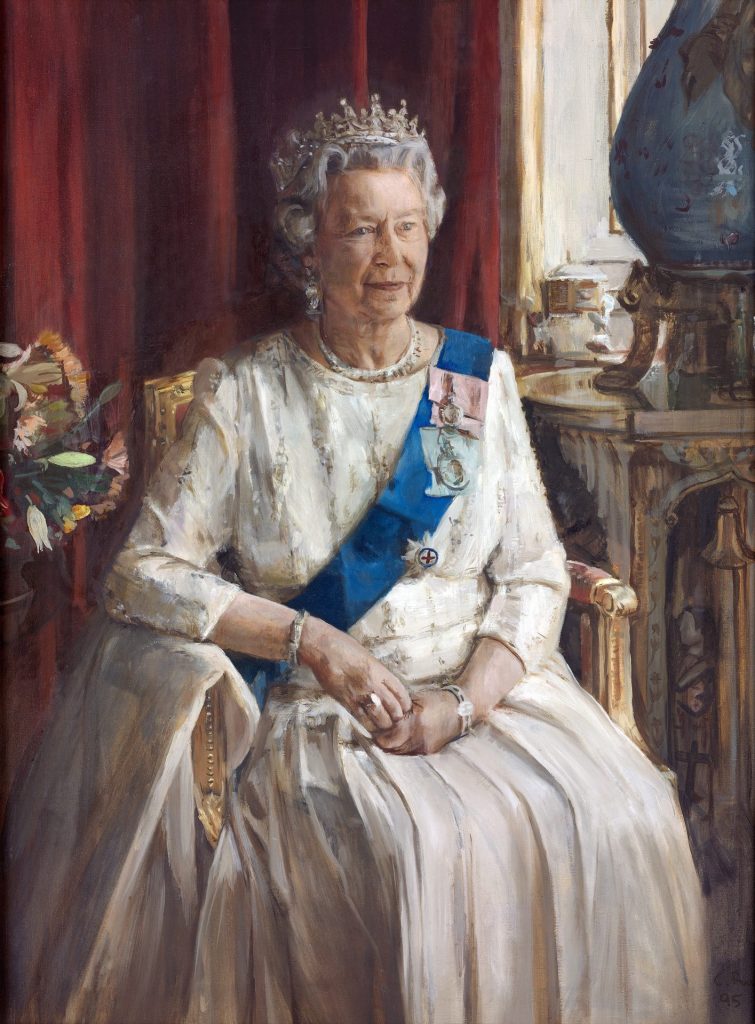
After spending time with the Queen in sittings, Christian describes the Queen as ‘the icon of female confidence’, full of liveliness, a ‘delicious’ sense of humour, and quick-wittedness.
In their first sitting, she asked him what his favourite artists were, and he replied saying he liked Joshua Reynolds’ work and her response was: “We have some of those downstairs”.
He described another laughable moment when he asked the Queen where he could get the films developed on his camera for the portrait, and she said without blinking: “Oh, there’s a chemist just over the road, that’s where we go.”
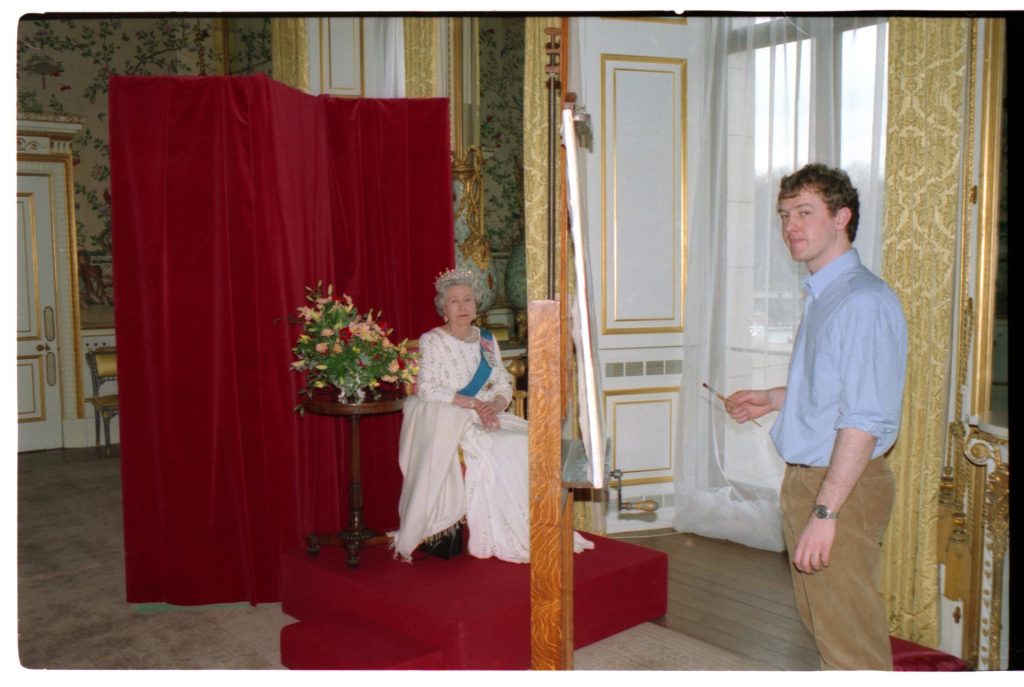
He also recalled another fond memory: “The Queen was being quite lively and bobbing around to the music playing outside when they were changing the guard, clearly enjoying the music and appreciating it, and I was trying to focus on an aspect of her face, so I asked her: ‘Do you mind keeping your head still?’ and then I got what I can best describe as a Paddington Bear stare back, and then I realised who it was that I was painting, and I shrank behind my easel for a moment.”
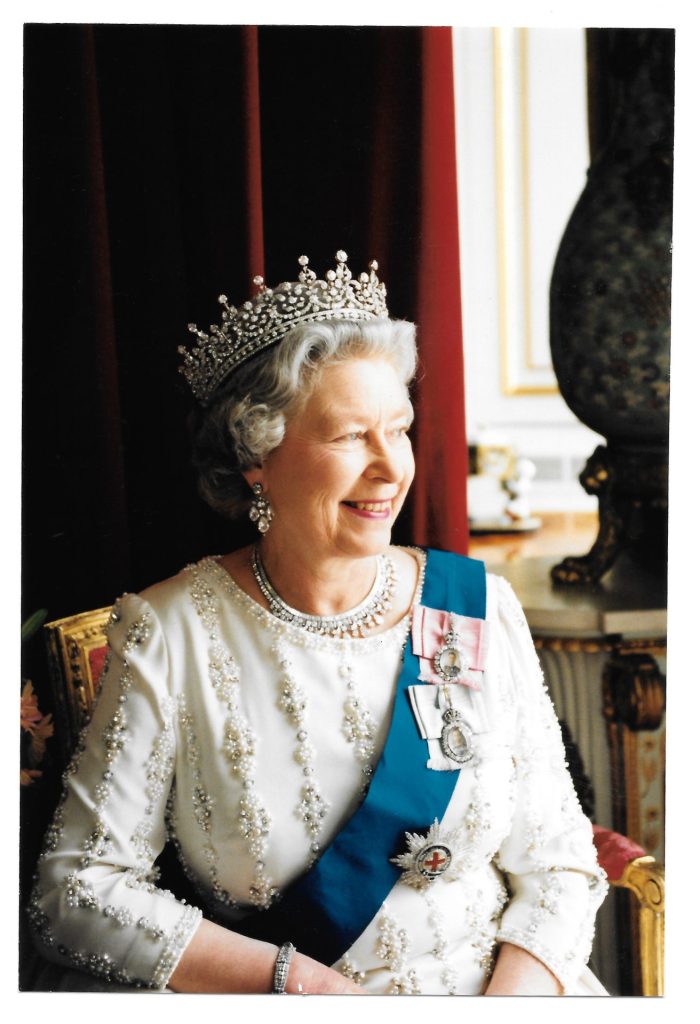
Christian had always wanted to be an artist, from reading Beano comics as a child to trying out his grandmother’s oil paints where he was enticed by the smell of the turpentine and the elaborate paint names.
At 18, he did a foundation course at Wirral Metropolitan College, and then did Fine Art at De Montfort University.
He went to London in the 90s and got an old studio in Whitechapel.
During his art training, Christian was juggling jobs to make ends meet, working shifts cleaning hospitals, serving sandwiches at BHS and painting tiles in a tile factory, where he would sometimes add his own extra details to the set designs like a shark fin in water to keep things interesting.
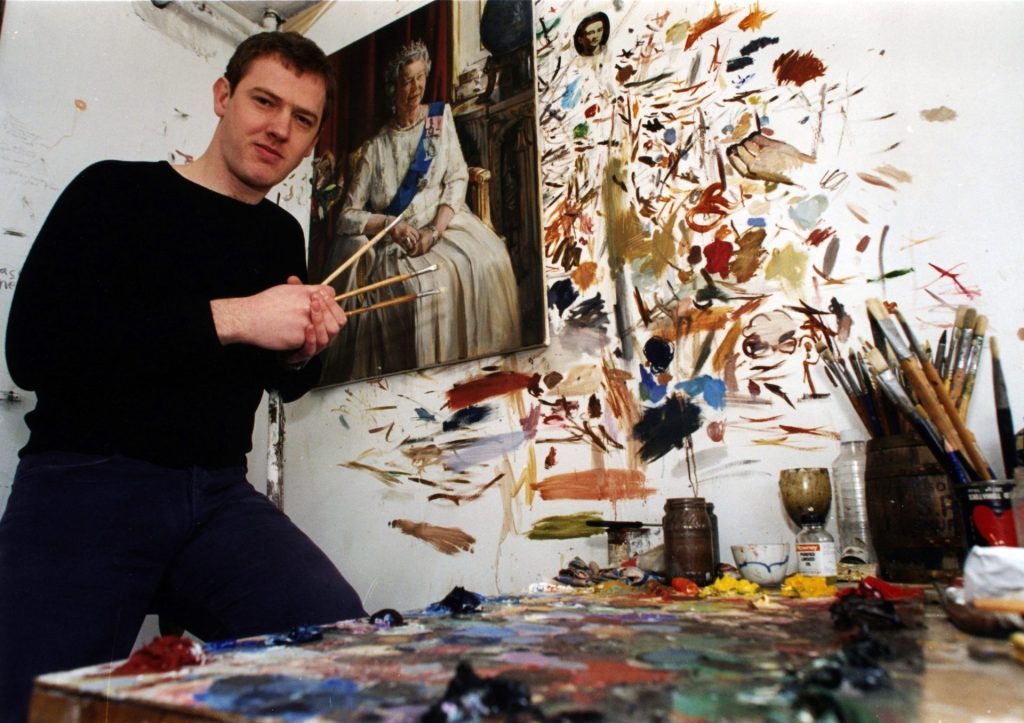
After hearing the news of her passing, Christian said: “I did feel very upset. I’m very thankful that she chose me to paint her portrait.
“It certainly altered the course of my life. A lot of people across the world feel the loss, because she’s been a constant, almost like a star or something you take for granted that is always there.
“Whether or not you’re paying attention to it being there, when it’s gone you feel the loss. This made it quite a jolt for everybody.”
One of his most cherished moments with her was when he made her laugh and the unreleased image he captured in that special moment is being exhibited in a tribute to the Queen at Quantus Gallery on September 28.
Feature image: courtesy of Christian Furr/Bridgeman Images 2022 (copyright)
